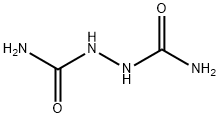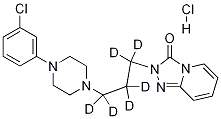BIUREA
- CAS NO.:110-21-4
- Empirical Formula: C2H6N4O2
- Molecular Weight: 118.09
- MDL number: MFCD00025398
- EINECS: 203-747-2
- SAFETY DATA SHEET (SDS)
- Update Date: 2024-12-18 14:08:57

What is BIUREA?
Chemical properties
WHITE POWDER
The Uses of BIUREA
Hydrazine-1,2-dicarboxamide is a useful compound in the process of producing protected anode active material particles for rechargeable lithium batteries.
General Description
White powder.
Air & Water Reactions
Insoluble in water.
Reactivity Profile
BIUREA is chemically classified as an amide. Amides/imides react with azo and diazo compounds to generate toxic gases. Flammable gases are formed by the reaction of organic amides/imides with strong reducing agents. Amides are very weak bases (weaker than water). Imides are less basic yet and in fact react with strong bases to form salts. That is, they can react as acids. Mixing amides with dehydrating agents such as P2O5 or SOCl2 generates the corresponding nitrile. The combustion of these compounds generates mixed oxides of nitrogen (NOx).
Fire Hazard
The flash point of BIUREA is not available, however BIUREA is probably non-flammable.
Purification Methods
Crystallise the diamide from water, wash the crystals with EtOH then Et2O and dry in vacuum over P2O5. It does not decompose on drying at 110o /48hours. Its solubility in H2O is 1% at 0o. [Andrieth & Mohr Inorg Synth IV 26 1953, Beilstein 3 H 116, 3 I 56, 3 III 229.]
Properties of BIUREA
| Melting point: | 247-250 °C |
| Boiling point: | 220.6°C (rough estimate) |
| Density | 1.6040 |
| refractive index | 1.4462 (estimate) |
| storage temp. | Sealed in dry,Room Temperature |
| solubility | Sulfuric Acid (Sparingly, Heated) |
| pka | 10.06±0.43(Predicted) |
| form | Solid |
| color | White to Off-White |
| CAS DataBase Reference | 110-21-4(CAS DataBase Reference) |
| EPA Substance Registry System | Biurea (110-21-4) |
Safety information for BIUREA
| Signal word | Warning |
| Pictogram(s) |
 Exclamation Mark Irritant GHS07 |
| GHS Hazard Statements |
H303:Acute toxicity,oral H315:Skin corrosion/irritation H319:Serious eye damage/eye irritation H335:Specific target organ toxicity, single exposure;Respiratory tract irritation |
| Precautionary Statement Codes |
P261:Avoid breathing dust/fume/gas/mist/vapours/spray. P304+P340:IF INHALED: Remove victim to fresh air and Keep at rest in a position comfortable for breathing. P305+P351+P338:IF IN EYES: Rinse cautiously with water for several minutes. Remove contact lenses, if present and easy to do. Continuerinsing. P405:Store locked up. |
Computed Descriptors for BIUREA
BIUREA manufacturer
New Products
4,4-Difluoropiperidine hydrochloride tert-butyl 9-methoxy-3-azaspiro[5.5]undecane-3-carboxylate Indole Methyl Resin N-Isopropylurea N,N-Dicyclohexylcarbodiimide(DCC) MELDRUMS ACID 5-METHYLISOXAZOLE-4-CARBOXYLIC ACID Magnessium Bis glycinate Zinc ascorbate 1-bromo-2-butyne 2-acetamidophenol 9(10H)-anthracenone Erythrosin B, 4-Piperidinopiperidine 2-((4-morpholinophenylamino) (methylthio) methylene) malononitrile 2,4-dihydroxybenzaldehyde 3-(4-morpholinophenylamino)-5-amino-1H-pyrazole-4-carbonitrile Methyl 2-methylquinoline-6-carboxylate 2,6-dichloro-4-nitropyridine 4-Bromo-2-chlorobenzonitrile 2-(benzylamino)acetic acid hydrochloride 4-(tert-Butoxycarbonylamino)but- 2-ynoic acid 3,4-dihydro-2H-benzo[b][1,4]dioxepine 1-Phenyl-1-cycloprppanecarboxylicacidRelated products of tetrahydrofuran
![2-[3-[Bis(2-chloroethyl)aMino]propyl]-1,2,4-triazolo[4,3-a]pyridin-3(2H)-one](https://img.chemicalbook.in/CAS/GIF/53689-10-4.gif)
![1,2,4-Triazolo[4,3-a]pyridin-3(2H)-one, 2-(trimethylsilyl)-](https://img.chemicalbook.in/CAS/20180629/GIF/64125-42-4.gif)
![1,2,4-Triazolo[4,3-a]pyridin-3(2H)-one, 2-[3-[4-(3-chlorophenyl)-1-piperazinyl]propyl]-7,8-dihydro-7,8-dihydroxy-](https://img.chemicalbook.in/CAS/20210111/GIF/55290-67-0.gif)





You may like
-
 Biurea CAS 110-21-4View Details
Biurea CAS 110-21-4View Details
110-21-4 -
 Biurea 95% CAS 110-21-4View Details
Biurea 95% CAS 110-21-4View Details
110-21-4 -
 BIUREA CAS 110-21-4View Details
BIUREA CAS 110-21-4View Details
110-21-4 -
 3-(4-amino-1-oxoisoindolin-2-yl)-1-methylpiperidine-2,6-dione 98%View Details
3-(4-amino-1-oxoisoindolin-2-yl)-1-methylpiperidine-2,6-dione 98%View Details -
 20677-73-0 (2,2-diethoxyethyl)methylamine 98%View Details
20677-73-0 (2,2-diethoxyethyl)methylamine 98%View Details
20677-73-0 -
 3-(4-(hydroxyamino)-1-oxoisoindolin-2-yl)piperidine-2,6-dione 98%View Details
3-(4-(hydroxyamino)-1-oxoisoindolin-2-yl)piperidine-2,6-dione 98%View Details -
 57381-49-4 2-bromo-4-chlorobenzonitrile 98%View Details
57381-49-4 2-bromo-4-chlorobenzonitrile 98%View Details
57381-49-4 -
 4,6-dichloropyrimidine-5-carbaldehyde 98%View Details
4,6-dichloropyrimidine-5-carbaldehyde 98%View Details
5305-40-8
